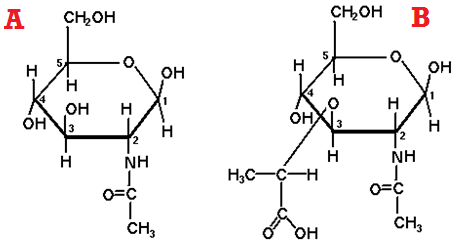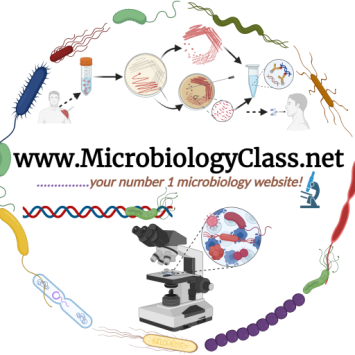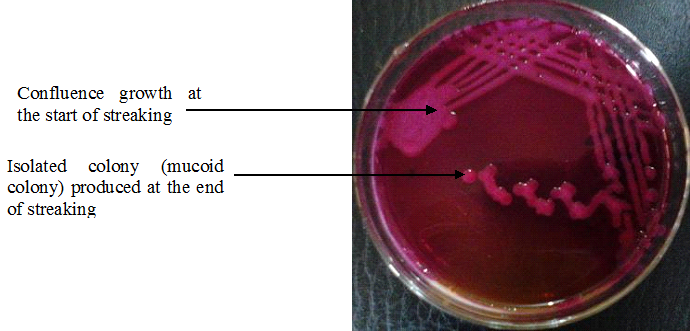Transpeptidation reaction is the chemical reaction that forms the peptide cross-links or bonds during the synthesis of peptidoglycan (murein) in a bacterial cell wall. Peptidoglycan or murein is a polysaccharide molecule that consists mainly of alternating repeats of N-acetylglusamine (NAG) and N-acetylmuramic acid (NAM). Murein is a bacterial cell wall polymer that contains short peptide molecules which forms glycan tetrapeptide during the Transpeptidation reaction.
NAG and NAM are two sugar derivative molecules with some amino acids (e.g. D-glutamic acid, L-alanine and D-alanine) attached to them both (Figure 1). NAG, NAM and the amino acids join together in a chemical reaction to form glycan tetrapeptide. To each molecule of NAM and NAG is attached a tetrapeptide consisting of alternating D- and L- amino acids (L-alanine and D-glutamic acid) to form a glycan tetrapeptide molecule.
The glycan tetrapeptide repeat unit is cross-linked to adjacent glycan chains either through a direct peptide linkage or peptide interbridge (as is the case for Gram-positive bacteria). But in Gram-negative bacteria, cross-linking of peptidoglycan usually occurs by the formation of peptide bond from lysine or diaminopimelic acid (DAP) of one glycan chain to the carboxyl group of the terminal amino acid (D-alanine) on the adjacent glycan chain. These processes culminate to the formation of peptidoglycan (murein) layer in both Gram-positive and Gram-negative bacteria.
In Gram-positive bacteria, it should be noted that the murein layer is usually composed of several sheets of peptidoglycan, and they form a larger proportion of the cell wall of Gram-positive organisms. But in Gram-negative bacteria, the murein layer is only but a single sheet of peptidoglycan. Though Gram-negative bacteria have a thin peptidoglycan layer as opposed to Gram-positive bacteria with a much thicker peptidoglycan layer, the cell wall of the former is much more complex than that of the later. And this is because of the presence of OM which lies outside the thin peptidoglycan layer and the presence of LPS amongst other cell wall constituents that are unique to the Gram-negative bacteria.

References
Alberts B, Bray D, Lewis J, Raff M, Roberts K and Watson J.D (2002). The molecular Biology of the Cell. Fourth edition. New York, Garland, USA.
Berg JM, Tymoczko JL, Stryer L (2002). Biochemistry (5th ed.). New York, NY: W. H. Freeman.
Brooks G.F., Butel J.S and Morse S.A (2004). Medical Microbiology, 23rd edition. McGraw Hill Publishers. USA.
Campbell, Neil A.; Brad Williamson; Robin J. Heyden (2006). Biology: Exploring Life. Boston, Massachusetts: Pearson Prentice Hall.
Cooper G.M and Hausman R.E (2004). The cell: A Molecular Approach. Third edition. ASM Press.
Dale J (2003). Molecular genetics of bacteria. Jeremy W. Dale and Simon Park (4th eds.). John Wiley & Sons Ltd, West Sussex, UK. Pp.
Karp, Gerald (2009). Cell and Molecular Biology: Concepts and Experiments. John Wiley & Sons.
Lodish H, Berk A, Matsudaira P, Kaiser C.A, Kreiger M, Scott M.P, Zipursky S.L and Darnell J (2004). Molecular Cell Biology. Fifth edition. Scientific American Books, Freeman, New York, USA.
Madigan M.T., Martinko J.M., Dunlap P.V and Clark D.P (2009). Brock Biology of microorganisms. 12th edition. Pearson Benjamin Cummings Publishers. USA. Pp.795-796.
Maton, Anthea (1997). Cells Building Blocks of Life. New Jersey: Prentice Hall.
Discover more from #1 Microbiology Resource Hub
Subscribe to get the latest posts to your email.


